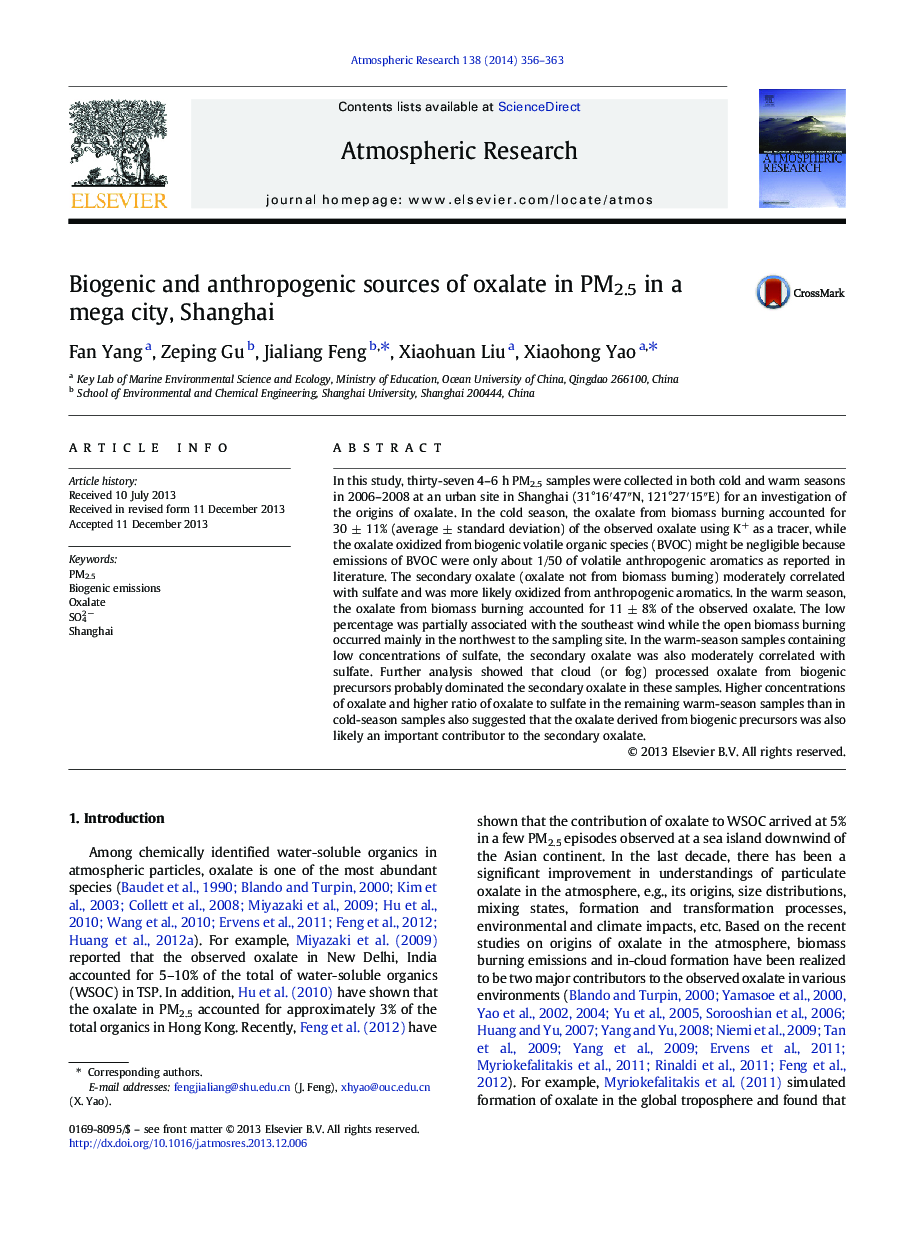| Article ID | Journal | Published Year | Pages | File Type |
|---|---|---|---|---|
| 6343677 | Atmospheric Research | 2014 | 8 Pages |
Abstract
In this study, thirty-seven 4-6 h PM2.5 samples were collected in both cold and warm seasons in 2006-2008 at an urban site in Shanghai (31°16â²47â³N, 121°27â²15â³E) for an investigation of the origins of oxalate. In the cold season, the oxalate from biomass burning accounted for 30 ± 11% (average ± standard deviation) of the observed oxalate using K+ as a tracer, while the oxalate oxidized from biogenic volatile organic species (BVOC) might be negligible because emissions of BVOC were only about 1/50 of volatile anthropogenic aromatics as reported in literature. The secondary oxalate (oxalate not from biomass burning) moderately correlated with sulfate and was more likely oxidized from anthropogenic aromatics. In the warm season, the oxalate from biomass burning accounted for 11 ± 8% of the observed oxalate. The low percentage was partially associated with the southeast wind while the open biomass burning occurred mainly in the northwest to the sampling site. In the warm-season samples containing low concentrations of sulfate, the secondary oxalate was also moderately correlated with sulfate. Further analysis showed that cloud (or fog) processed oxalate from biogenic precursors probably dominated the secondary oxalate in these samples. Higher concentrations of oxalate and higher ratio of oxalate to sulfate in the remaining warm-season samples than in cold-season samples also suggested that the oxalate derived from biogenic precursors was also likely an important contributor to the secondary oxalate.
Related Topics
Physical Sciences and Engineering
Earth and Planetary Sciences
Atmospheric Science
Authors
Fan Yang, Zeping Gu, Jialiang Feng, Xiaohuan Liu, Xiaohong Yao,
